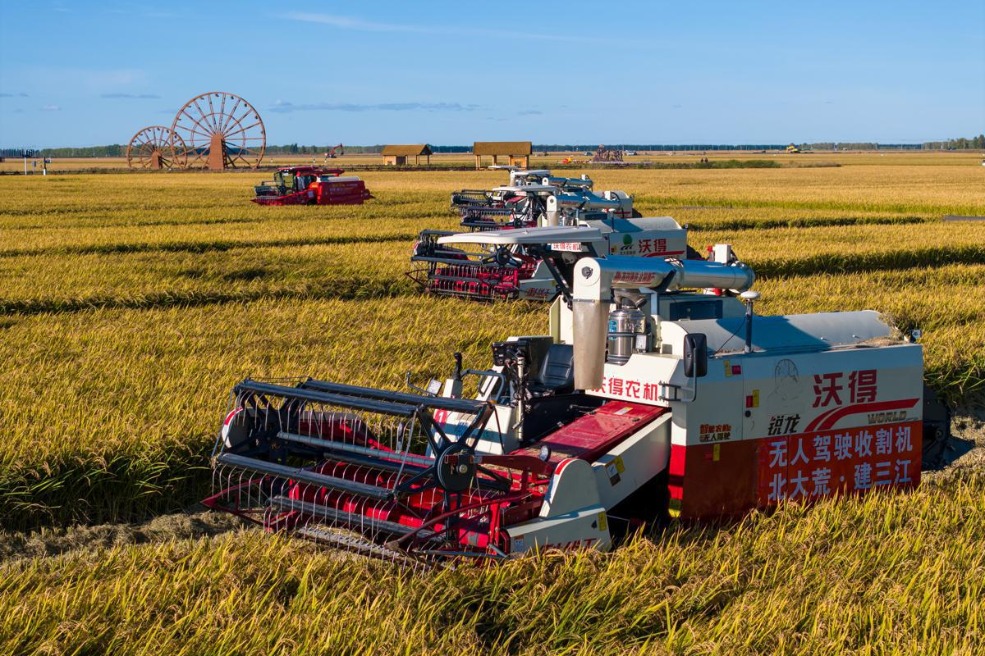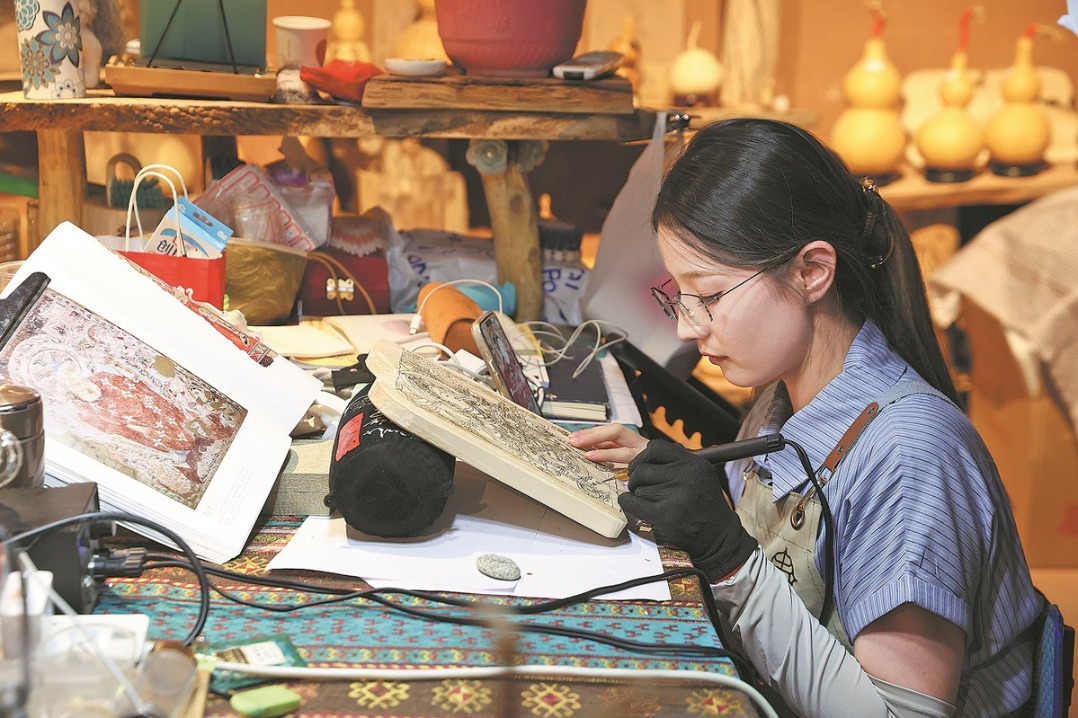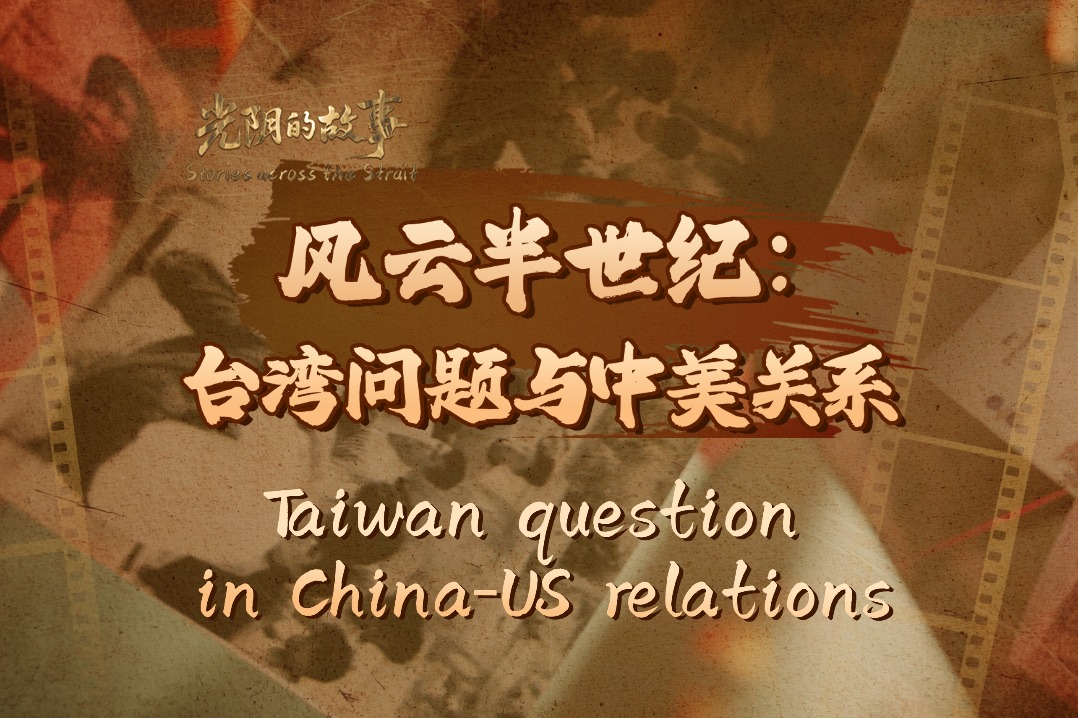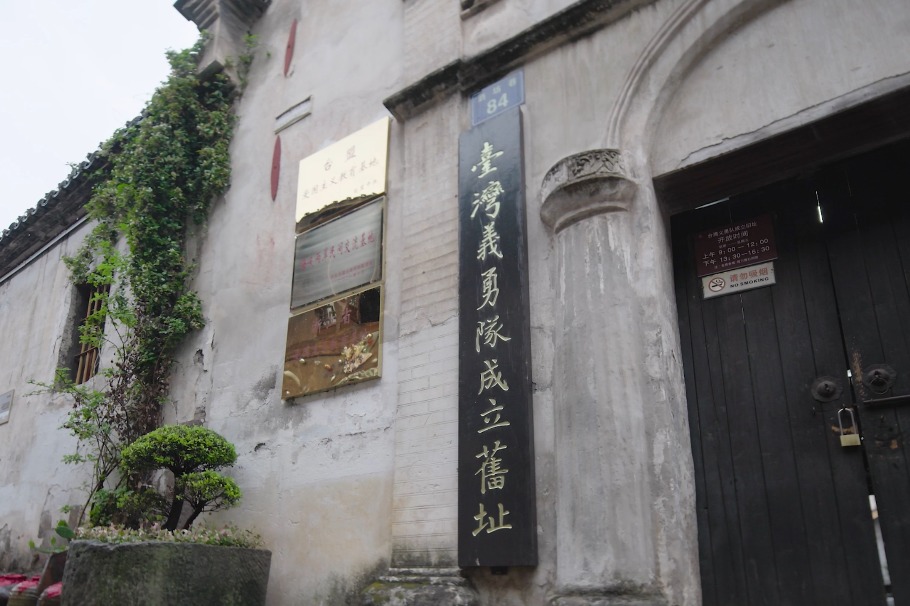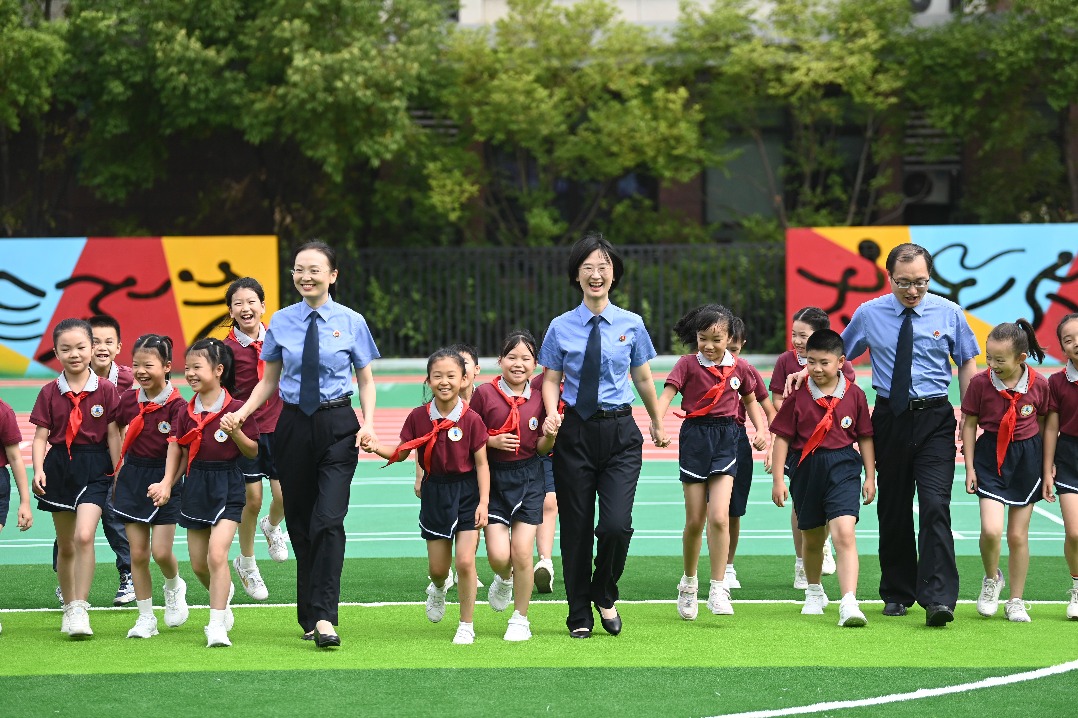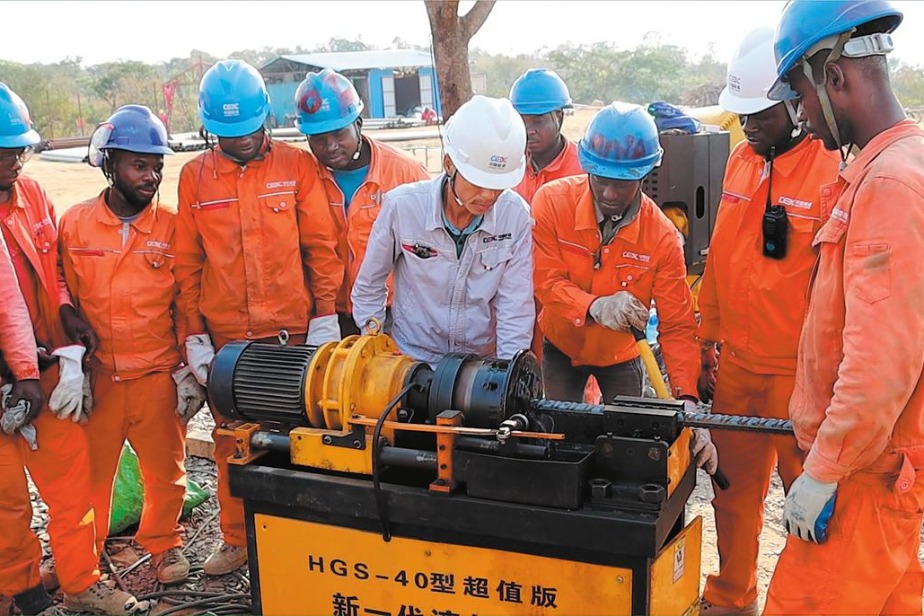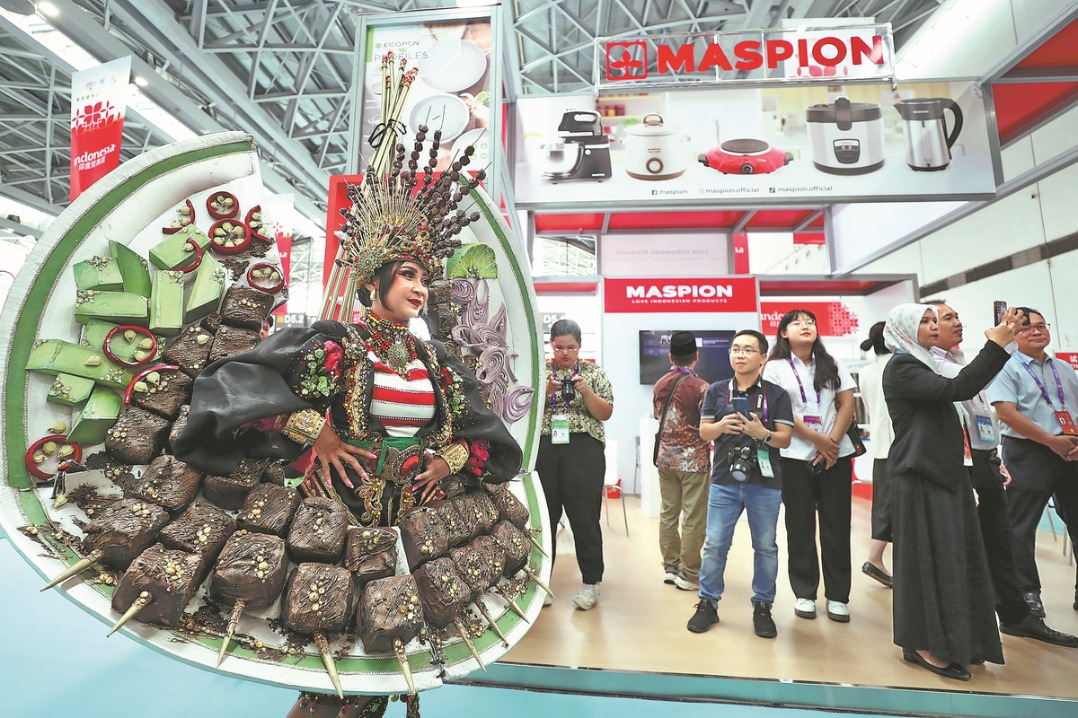Sta. Romana: BRI offers broad prospects for China-Philippines cooperation

China.org.cn: Sir, as the Ambassador to China, how do you envision the long term future of the relationship between our two countries?
Romana: Well, I think, from the point view of the Philippines, I think, the current administration under President Duterte has made it clear. That we start with the basic recognition, that our destiny belongs to Asia. One, because of our geography, and second because we have to first deal with our neighborhood. And so that is why we speak of ASEAN centrality, the centrality of the Association of Southeast Asian Nations, of which we hold the chairmanship this year. And that is why the emphasis has been to further improve the unity among the ASEAN countries. But beyond that, we have to recognize that China is our biggest neighbor, and we have to deal with the central issue of how to live with China as a neighbor.
One on the basis of peaceful coexistence, but more than that, on the basis of promoting a friendly, cooperative relationship on the basis of sovereign equality and mutual benefit. And so, I think, the Philippines, for historical and cultural reasons in the past, have tended to be close to Spain, because Spain colonized us for centuries, for the U.S., which also colonized us for, since the beginning of the 21st century, and Japan also, because Japan is a neighboring country and we have good relations with Japan. But I think what the Philippines would like to do is to have more balance, not to depend on the west, not to depend on only one country, but to broaden and diversify its relationship. And included in this, is of course China. Because China is not only the biggest neighbor, it’s also a very big market.
And we have history that goes back actually, back several centuries, before the Spaniards came, before there was the formation of the Filipino nation, the Sultan of Sulu, which is in the southern Philippines, already developed friendly relations with the Chinese emperor during the Ming dynasty. And he would come here, and offer the pearls from the Sulu Sea, and other products from Mindanao, and offer this to the emperor, and the Chinese emperor in turn would also allow them to develop trading relationship. The Sultan of Sulu actually, on his way back to the Philippines during one of his trips here in 1417, died on his way home. He died near Shandong, and that’s why the emperor, gave him a tomb. He has a tomb in Dezhou, and this now has been renovated, it is like a small version of an imperial tomb. And because it is the 600th anniversary this year, it has become one of the points of interest, in terms of developing tourism, and people to people relationships, and sound Philippine historians as well as Chinese historians have been researching this topic. But the point I am making is that what we are doing is basically reviving the story, the long standing relationship. And we’d like to maintain our friendship with our traditional partners, in the recent past, as well to develop a new friendship and renew a historic friendship with China, and develop good relations with all the major powers, whether it would be the U.S., Japan, Russia, India, on the basis, of course, of ASEAN centrality, our immediate neighbors in Southeast Asia of course is the first priority for us.
China.org.cn: Over the past 30 years, China has raised 800 million people above the poverty line. What’s your comment on China’s achievement in poverty reduction, and what kind of experience can other countries possibly learn from China’s successful experience, and how can our two countries, cooperate in the areas of poverty reduction or alleviation?
Romana: Actually, poverty alleviation is one of China’s success stories over the past three decades. And this is the one that has caught the attention of the world, including the international financial institutions. I mean the World Bank has pointed out China as the major contributor in terms of reducing poverty in the world. And now China aims to alleviate absolute poverty in the next, by 2020. So certainly this is an area where a lot of developing countries would like to learn from China. And this is an area where there’s room for bilateral cooperation. The Philippines is certainly very interested in China’s experience in reducing poverty alleviation. Right now, there’s still around 16 or 17 percent of the Philippine population that is suffering from poverty, and we want to reduce that during the period of President Duterte’s administration. But, the key is, you know, whether its 20 percent, 25 percent in the Philippines, down to 16, down to 12 or 10 percent, it’s a major challenge. And, and this is something that we need help not only from the communities, the different sectors in the Philippines, but from learning the experience around the world, including China.
And that is why one of the Philippine cabinet secretaries in charge of poverty alleviation has made several trips to China, has gone on trips to the areas which were considered as models in poverty alleviation. And, trying to figure out what lessons we can learn from the Chinese experience that would be useful in alleviating poverty in the Philippines, because this is one of the key challenges facing the current administration. And not only that, it has faced several administrations over time. And our experience has been, that it has not been easy to reduce poverty, but we manage to do it slowly, and we hope we will be able to absorb the lessons from around the world, including the Chinese experience, and thus be able to dramatically reduce poverty in the Philippines in the foreseeable future.
China.org.cn: China.org.cn is launching its Belt and Road Initiative website. We will be very much honored if you could say a few words in support of the new website.
Romana: There’s a lot of interest, a lot of curiosity over what is the Belt and Road Initiative, what does it mean, not only for China, but for the world, for the Philippines. And so, a lot of people are asking, a lot of scholars are paying attention, and there’s also a lot of misunderstanding, on what it means. So the key here, is for China to be able to explain its perspective, and also to have a website that will enable anybody, who wants to check the website to find out more about what the projects are, what countries are involved, where the challenges are, where the successes are. So, I wish you well in this endeavor, and I congratulate you for coming up with this website, and I hope you will do your best to be able to provide the necessary information, so that the world will understand what the Belt and Road Initiative is all about.
(Planning: Wang Donghai; Host: Yeerken; Editing: Jin Ling, Liu Mengya; Cameraman: Guo Junkui)
- Forum explores promotion of sustainable development through community education
- China pledges greater role in UN peacekeeping
- SCO forum calls for greater global collaboration on traditional medicine
- China's nuclear policy highly stable, continuous, predictable: spokesman
- Beijing condemns US remarks on Taiwan status
- Hong Kong's role in promoting TCM highlighted at forum

















